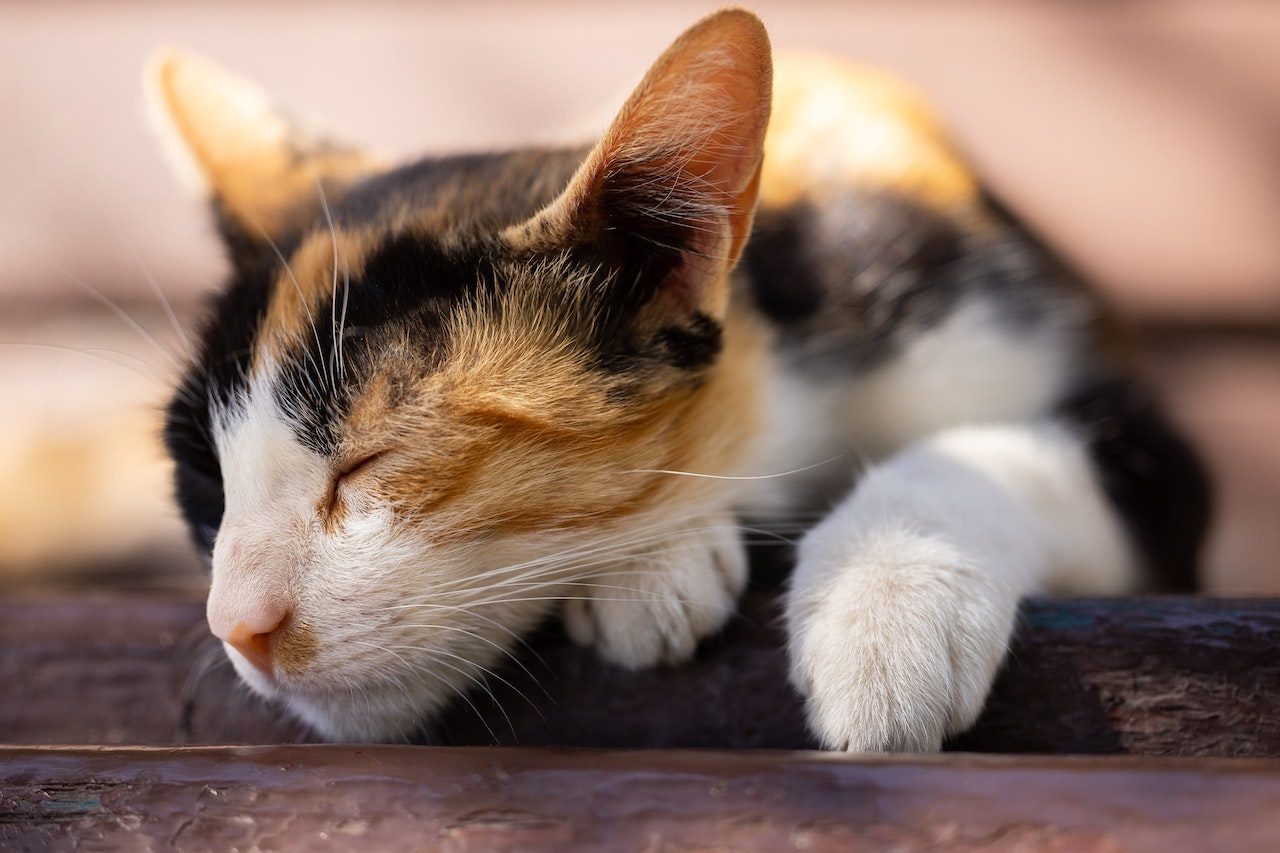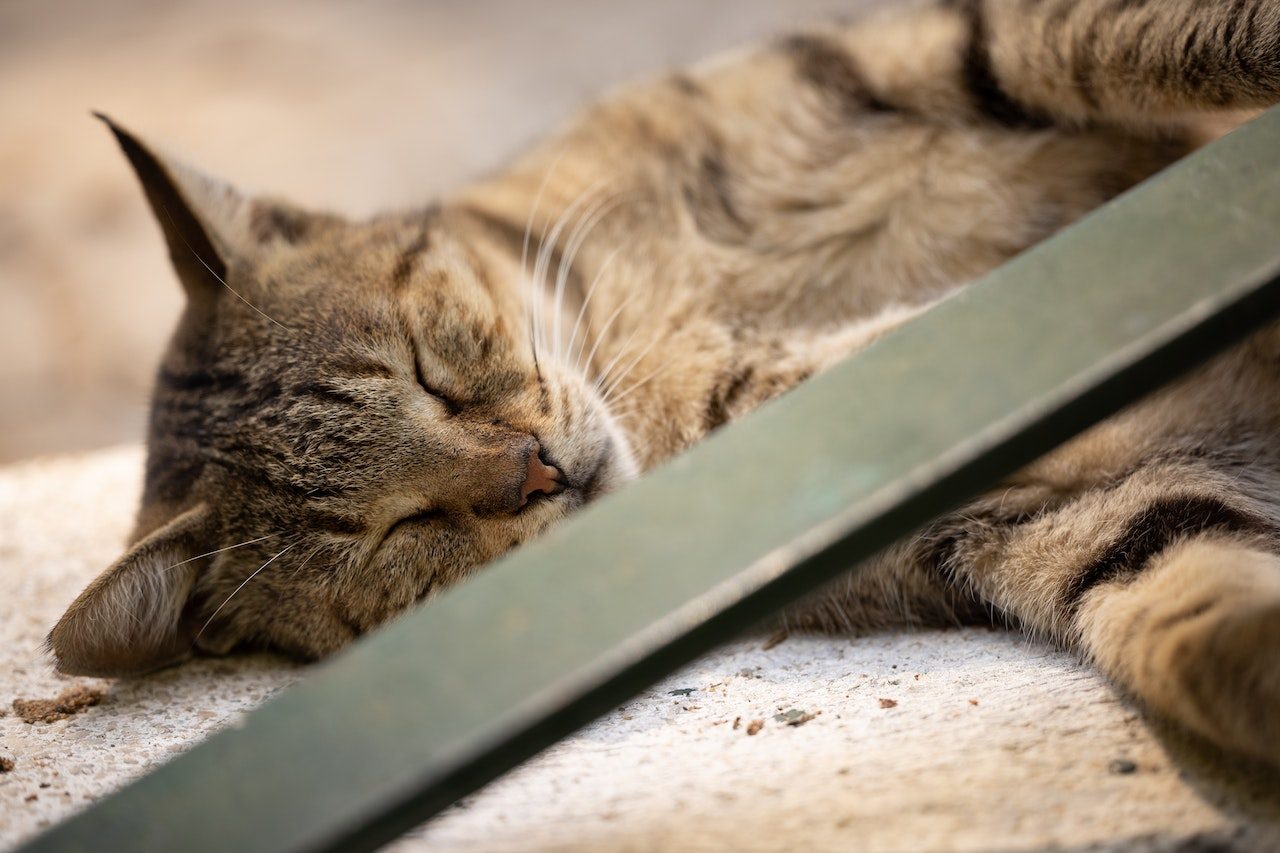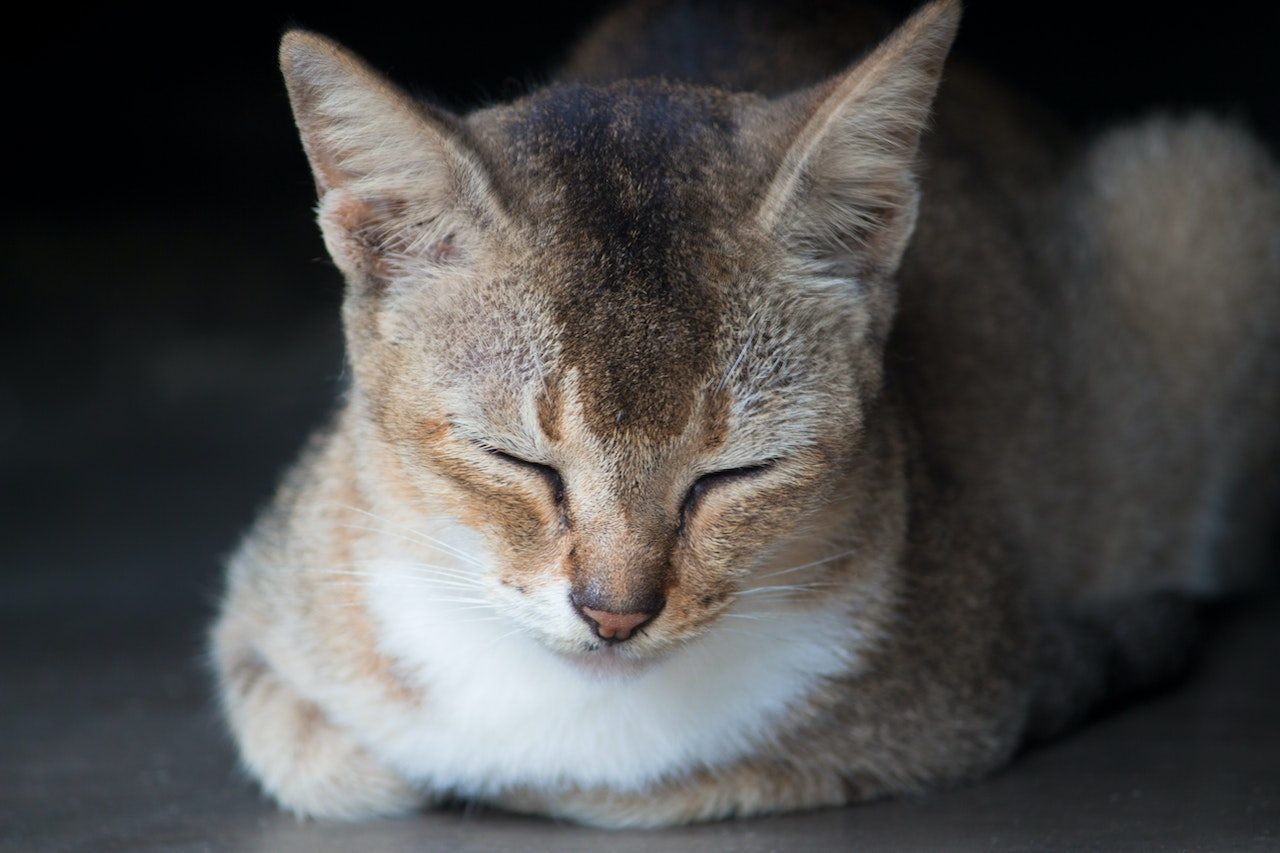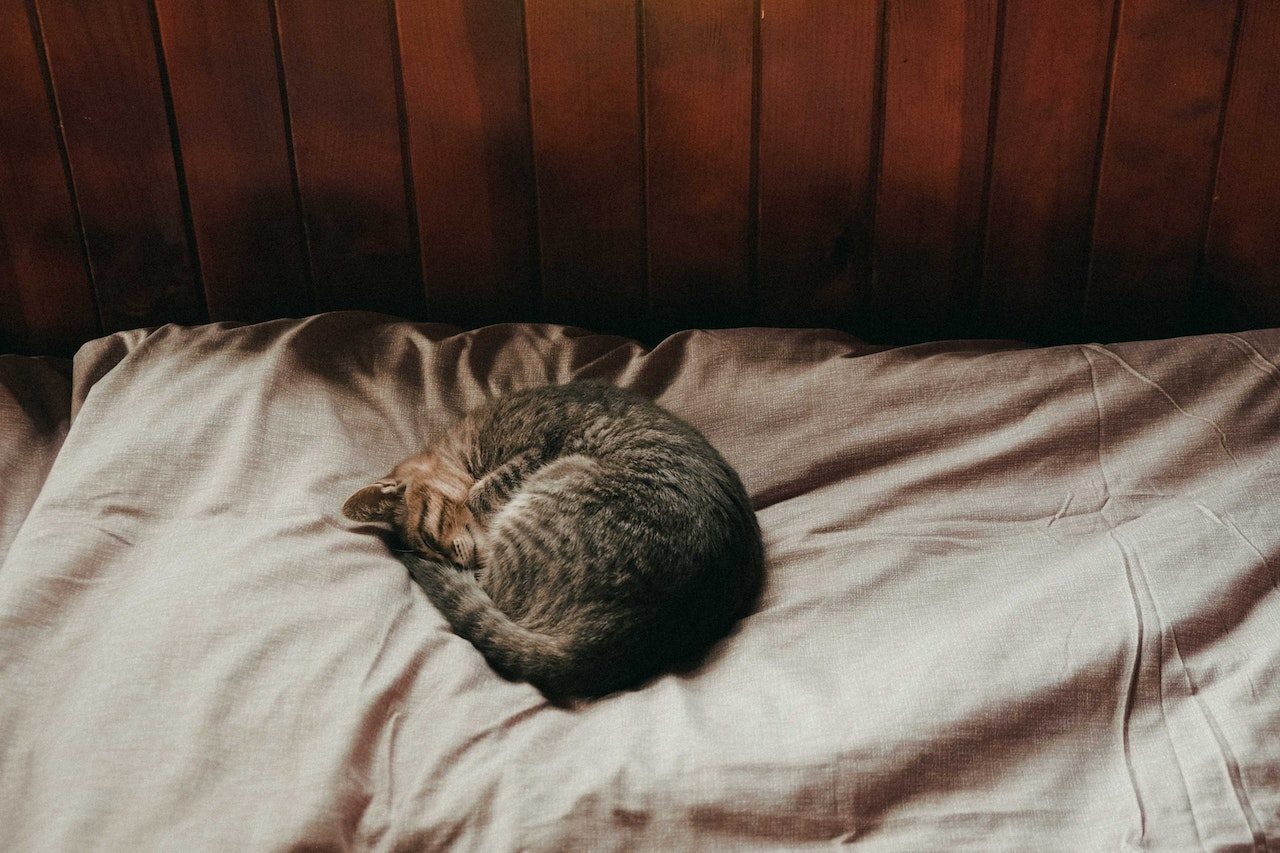📖 Table of Content:
Nobody wants to hear the words “cancer” and “cat” together, especially not when they’re coming out of the vet’s mouth. But, here you are. And, you’re dumbfounded because you don’t know anything about feline lymphoma and when to euthanize a cat suffering from it.
Nobody prepares you for such a predicament. Nobody warns you about the ifs, the whys, and the hows of caring for the furriest of living beings that become a part of your family before you even understand what’s going on. And, nobody cautions you about the endless cycle of emotions that arise when things go south.
But, cancer isn’t a folklore tale as much as you’d prefer the word to have disappeared along with gorgons, goblins, and gnomes. As a matter of fact, cancer’s one of the most prominent health problems that appear among furry friends.
And, feline lymphoma’s one of the most common cancer types. Lymphoma makes up ninety percent of feline blood cancers and thirty-three percent of all tumors among cats. Oh, and these numbers shouldn’t scare you because an early diagnosis might make a world of difference for your precious pet.
So, what exactly is feline lymphoma? What are the symptoms of feline lymphoma? What are the treatments for feline lymphoma? And, when does one decide to euthanize a cat with feline lymphoma? We’re bringing you the answers to (hopefully) help you make the right move.
What’s feline lymphoma?
Oh, maybe you’ve noticed your four-legged friend hasn’t been feeling her best for the past couple of weeks. Perhaps she’s been sleeping a little too much, refusing to eat a little too often, or forgetting to rush to her litter box whenever she feels the need to “mark her territory”.
Maybe she’s even been dealing with other symptoms screaming “there’s something wrong”. But, you haven’t been able to point your finger at what’s going on. And, you haven’t really allowed yourself to go straight to cancer the moment that you noticed something was wrong. But, now you have to.
Perhaps you’ve heard the words “feline lymphoma” from your vet’s mouth or you’ve stumbled upon them through a quick Google check of your kitty’s symptoms. And, you might be wondering what they mean. What’s feline lymphoma and when do you decide whether to euthanize your cat or not?
First things first, feline lymphoma’s one of the most common types of cancer among cats. Lymphoma’s the cancer of the lymphocytes. Lymphocytes are a bunch of cells responsible for the health of your cat’s immune system.
And, lymphocytes travel through your cat’s body with the help of blood vessels and lymphatic vessels. So, feline lymphoma doesn’t affect a single spot but rather the entire body. That means your purrincess might experience an array of symptoms before you (or your vet) connect the dots.
What are the types of feline lymphoma?
Now, the moment that you read the words “affects the entire body,” you can’t help but freak out and turn to your friend Google to search for answers.
“What’s the worst thing that can happen when your cat gets a cancer diagnosis? What happens when your cat gets lymphoma? How can you help your cat when she’s dealing with lymphoma?”
First things first, there are different types of feline lymphoma affecting the answers you’re looking for. For example, the most common breakdown suggests that there are two types of lymphoma that affect the progression of the disease and the symptoms.
So, large-cell lymphoma seems to be the type of lymphoma that’s more aggressive. Such lymphoma grows and spreads quickly (within four to six weeks). On the other hand, small-cell lymphoma spreads slowly, taking several months to show the first symptoms.
That being said, the most frequently diagnosed forms of feline lymphoma (depending on the area of the body they affect) are intestinal lymphoma, mediastinal lymphoma, and renal lymphoma. As you might have guessed, intestinal lymphoma affects the gastrointestinal tract (the Achilles heel of the feline population).
On the other hand, mediastinal lymphoma affects the area around the chest (the lymph nodes or the thymus). And, renal lymphoma affects the kidneys. And, most forms of feline lymphoma are connected to feline leukemia which might affect the symptoms.
What are the symptoms of feline lymphoma?
Oh, there’s hardly anything more heartbreaking than catching a glimpse of your fluffy friend struggling to eat, drink, or even get to her litter box before there’s an accident. But, nothing can prepare you for the whirlwind of emotions that overtake you when you start connecting the dots.
“Lack of appetite, lethargy, weakness, weight loss… She’s either eaten something she shouldn’t have or she’s got cancer!”
And, the fact that there are different types of feline lymphoma doesn’t help the process of figuring out what’s wrong with your feline friend once she starts showing symptoms.
For example, intestinal lymphoma might show symptoms of GI distress such as lack of appetite, lethargy, weakness, weight loss, vomiting, diarrhea, and upset stomach. On the other hand, mediastinal lymphoma might show symptoms of respiratory distress such as difficulty breathing, wheezing, and coughing.
And, these symptoms might not seem that scary. But, make sure to contact your vet and schedule an appointment the moment that you notice them.
Blood tests, urine tests, and radiography should be able to rule out other diseases. A biopsy (a tissue sample) should confirm whether your cat’s dealing with feline lymphoma.
Of course, nobody wants to face such a terrifying diagnosis. But, you might find solace knowing that different forms of feline lymphoma do respond great to treatment. And, you might not even have to plague your mind with thoughts of feline lymphoma and whether or when to euthanize your pet.
What are the treatments for feline lymphoma?
Before you start freaking out over the possibility of losing your four-legged friend, make sure you understand the options that you have. Actually, most forms of feline lymphoma respond great to treatment. However, there are a couple of things to consider beforehand.
Treatment options might differ depending on your cat’s physical condition, as well as your financial situation. What do we mean by that? First things first, cats can get cancer when they’re young. But, most forms of feline lymphoma occur when they’re older, weaker, and more susceptible to different diseases.
And, cats seem to respond great to chemotherapy and other treatment options. But, older cats might not have the strengths to endure the same. Additionally, surgery, chemotherapy, medication, and supportive and palliative care cost a lot of money which might not be a burden most pet parents can take.
However, we shouldn’t overlook the fact that feline lymphoma doesn’t have to be the end because there are treatment options available. First things first, lymphoma is typically treated with chemotherapy. Cats endure chemo much better than humans and might go through the entire process without adverse reactions.
On the other hand, there’s a possibility to treat lymphoma with surgery on the off chance that the vet can remove the affected area. As we’ve mentioned before, lymphoma typically affects the entire body. But, when the lymphoma’s localized, the vet can perform surgery and remove the cancerous area.
Last but not least, there’s a possibility a cat suffering from feline lymphoma might not be able to get surgery or go through chemotherapy. Unfortunately, the only option that’s left seems to be palliative care which serves as a way to make your cat as comfortable as possible as the disease progresses.
What’s the life expectancy for cats with feline lymphoma?
But, how do you know when to euthanize a cat with feline lymphoma? How can you be sure you would be doing what’s best for her when you don’t even understand whether she would be able to have a long life regardless of the lymphoma diagnosis? How can you be sure you wouldn’t be making a mistake?
Deciding whether to euthanize your cat might be one of the most complex decisions of your life. “No!” seems to be the first thing that comes to mind the moment your vet suggests the possibility. “Never in a million years!” seems to be the proper response when you’re trying not to think of the alternative.
But, you’re aware that you wouldn’t be able to watch as your furry friend suffers through treatment after treatment, struggles with eating and drinking, and spends most of her days with her whiskers on the floor. “Well, what’s the life expectancy for cats with feline lymphoma?”
Remember that whole “large-cell lymphoma and small-cell lymphoma” thing we mentioned earlier? Turns out these two types of lymphoma determine life expectancy. That’s because they determine how quickly or how slowly cancer spreads through your cat’s body.
So, when a cat that’s relatively young and healthy gets small-cell lymphoma, she might be able to keep the disease under control for as long as four years. But, when an older, weaker cat gets large-cell lymphoma, she might not be as lucky. Actually, the standard life expectancy seems to be three to ten months.
When to euthanize a cat with feline lymphoma?
First things first, you’re dealing with the heartbreaking reality that your fluffy friend’s suffering from one of the most dreaded diseases out there – breathe. Give yourself some time to understand what’s going on and come to terms with the possibility of having to decide whether (or when) to euthanize your cat.
And, we’re aware that the thought of saying goodbye to your precious pet makes your heart hurt. But, there are times when you have to think about what’s best for her rather than what’s best for you.
As a matter of fact, she might have to deal with chemotherapy, weakness, lethargy, diarrhea, and other sneaky symptoms for the rest of her life.
Before you make any decisions on your own, make sure to consult with your vet. Establishing a good relationship with the person that’s taking care of your feline friend might help you feel more comfortable discussing treatment options (or lack thereof). Sure, your vet can’t decide for you but he can give you the guidance you need.
And, we’re doing the same by bringing you a couple of things to keep an eye out for during the process.
1. She can’t groom or take care of herself
So, you’re wondering whether or when to euthanize your cat that’s suffering from feline lymphoma. You might want to check whether she’s able to do the things that make her happy and healthy.
Sure, the ability to groom and take care of herself might sound insignificant compared to what she’s dealing with. But, it’s incredibly important to her.
As a matter of fact, cats spend a huge chunk of the day grooming themselves. When they stop doing that, they’re sending you the message that something’s wrong.
And, cats don’t groom themselves for the reasons you might think. Grooming helps them regulate their body temperature, maintain the health of their skin and coat, and stimulate circulation.
Any kind of health problem (emotional or physical) might trigger your cat to stop grooming herself or to start grooming herself excessively. Dealing with an aggressive disease such as feline lymphoma might prevent her from grooming herself because she’s uncomfortable, suffering, and unable to move.
And sure, you might offer to do the grooming for her. But, chances are you won’t be able to keep on doing that as much as she would want you to. As her health’s declining, you might want to consider the option of putting her down and ending her suffering.
2. She can’t eat or drink
So, your precious purrincess can’t eat or drink without your help. That means you might want to consult with your vet on how to proceed. As a matter of fact, lack of appetite’s one of the most common side effects of feline lymphoma which can cause other health problems when left untreated.
She might start losing weight and becoming weaker and weaker because she’s not getting the energy she needs from food. She might become severely dehydrated because she’s not getting her daily dose of hydration. And, she might develop many other health problems because of various vitamin deficiencies.
But, these are only the tip of the iceberg! When your cat’s not able to eat or drink on her own, she might become depressed, lethargic, and lose the motivation to get better. She’s been self-sufficient her entire life. She might have a hard time accepting the fact that she has to rely on humans to feed her and provide her with water.
That being said, lack of appetite along with a feline lymphoma diagnosis might be a good starting point for a conversation about whether or when to euthanize your feline friend.
3. She can’t do anything on her own
One day you start noticing your feline friend can’t seem to do anything without your help. You think to yourself “I can help her do whatever she needs to do! She deserves my help!” No, there’s nothing wrong with offering her a helping hand. But, there are times when your helping hand stops doing the trick.
Cats deserve to have a happy and healthy life packed with fulfilling foods, memorable experiences, fun toys, and physical activity. Sure, they can go through moments when they don’t have one of these things or when they don’t have any of them. And, they come out at the other end without a scratch.
But, they can’t go without these things for a longer period. And, they can’t go without these things and battle a disease that makes them suffer whenever they try to roll over, get up, or walk. So, your kitty might be fine with your helping her for a while.
But, don’t forget you have other options to help her make the best of what she’s got left.
4. She’s under a tremendous amount of discomfort
Regardless of the type or the form of feline lymphoma your kitten might be dealing with, chances are she’s suffering from a tremendous amount of discomfort. She has to deal with weakness, lethargy, and depression. She aches every time she tries to move a muscle.
When the levels of discomfort skyrocket, you might want to consider other options. Chemotherapy and palliative care might help your feline friend live a little longer. However, they might not be able to help her live better (unless she’s dealing with a small-cell lymphoma).
Settling on when to euthanize your cat that’s dealing with feline lymphoma might be the best thing you can do for her at the moment. Take the time you need to consult with your vet, consider your options, and settle on a decision that’s best for both of you. But, try to focus on what she needs the most.
5. She’s sleeping for most of the day
Oh, you might think she’s getting the rest she needs after battling a deadly disease for most of the day. But, excessive sleeping’s a sign she’s not doing that great.
When you notice your precious purrincess spending most of her time sleeping in the bathtub, lounging on the tiles, or laying on the hard floor, you might want to consider a couple of things.
First things first, weakness, lethargy, and depression (which are accompanied by a lot of sleeping) suggest that your cat’s condition might not be getting better. And, when she starts refusing to eat or drink (along with other symptoms), she might be communicating she’s no longer capable of pushing through the disease.
Deciding to euthanize your precious pet might never feel right. But, letting her suffer while she’s dealing with a disease she can’t beat doesn’t sound like the better alternative. Talk to your family, consult with your vet, and consider every option you have. And, don’t be scared to do what’s best for her.
How to care for a cat with feline lymphoma?
When you find out your cat’s dealing with feline lymphoma, chances are you’re going to have a bunch of questions. Can she beat the lymphoma? What’s the treatment for lymphoma? When to euthanize a cat dealing with lymphoma?
Whatever you and your vet decide to do, your feline friend’s going to need someone to take care of her during the process. Whether she’s dealing with chemotherapy or she’s getting palliative care, she’s going to need you to offer her a helping hand – a warm place to sleep, easy access to food and water, and keeping a close eye on her.
Other than that, make sure you keep her safe and comfortable, monitor the levels of discomfort she’s experiencing, evaluate the quality of her life, and don’t shy away from discussing the possibility of euthanasia to help end her suffering. And don’t forget to provide her with plenty of love and affection!
Find out more: When To Euthanize A Cat With FIP? Advice For The Brave Ones







